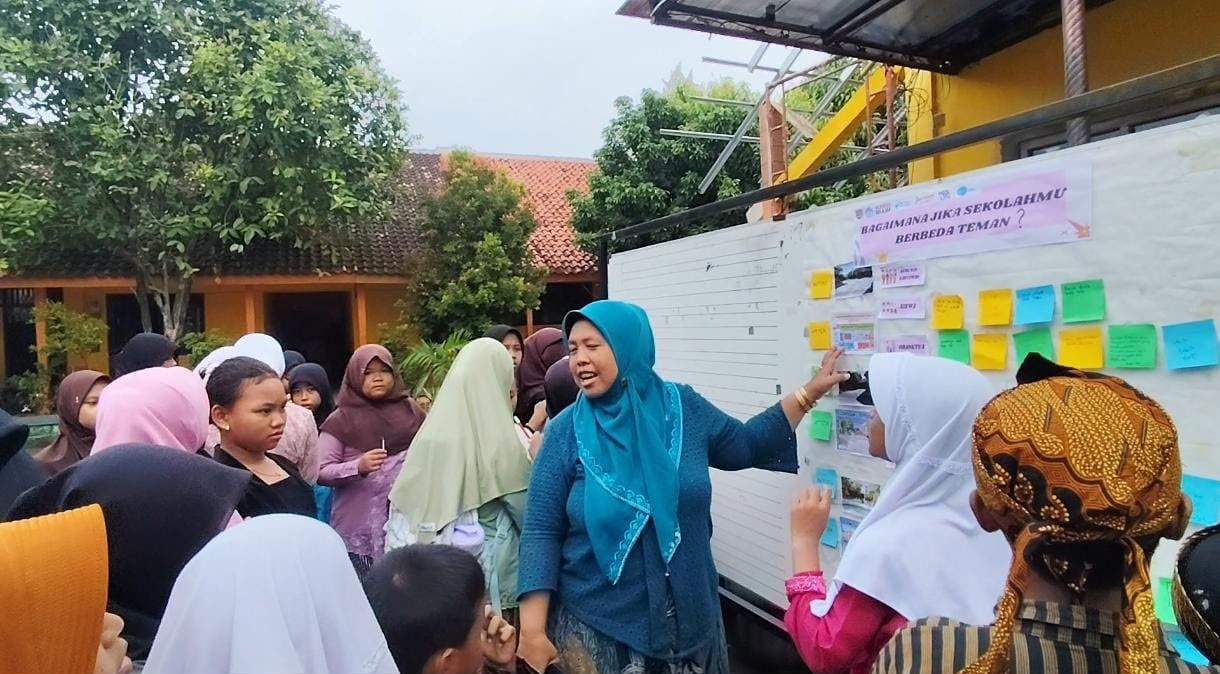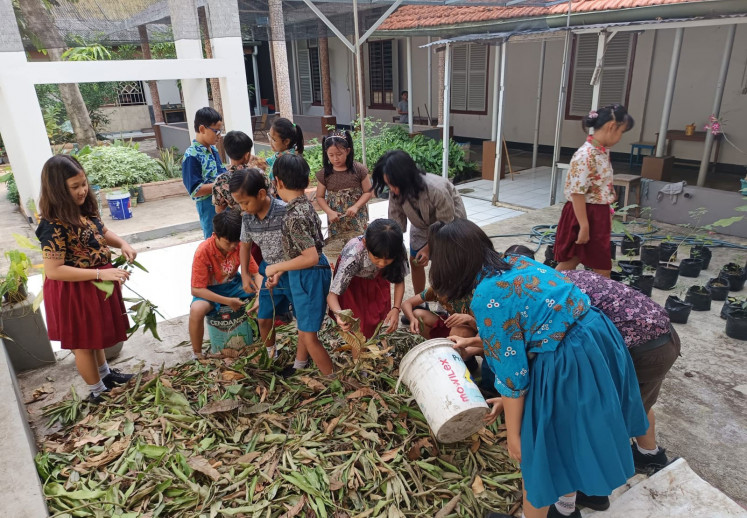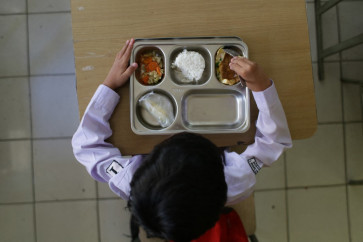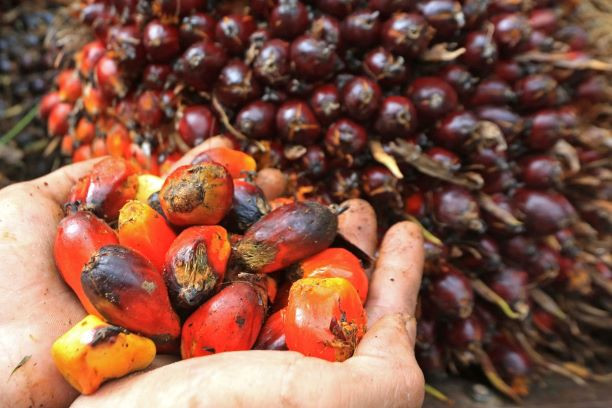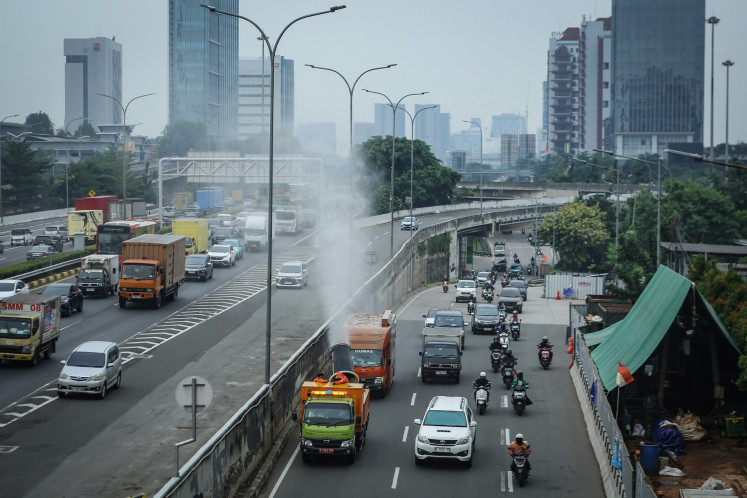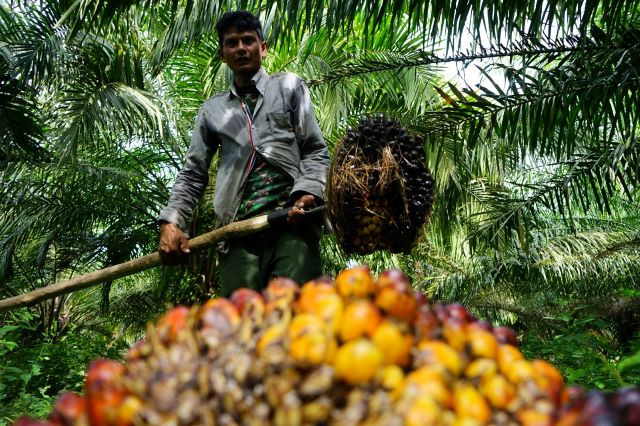Popular Reads
Top Results
Can't find what you're looking for?
View all search resultsPopular Reads
Top Results
Can't find what you're looking for?
View all search resultsOASIS Schoolyards: Building climate resilience through elementary schools
Change text size
Gift Premium Articles
to Anyone
A
cross Semarang, Central Java, a quiet transformation is underway. In the face of mounting climate threats such as heat waves and tidal flooding, the Semarang city administration is taking action, with a focus on schools.
This effort, known as the OASIS Schoolyards initiative, is led in collaboration with anchor partners Resilient Cities Network (R-Cities), Milklife and a growing community of supporters including Kuark and Polytron. Short for openness, adaptive, sensitization, innovative and social ties, OASIS Schoolyards offer a transformational approach to reimagining school environments as “urban oases”: green, cool, inclusive and multifunctional spaces. These redesigned schoolyards support children’s learning and play, while developing a culture of climate awareness and sustainability across the school community.
First launched in Paris in 2018, the OASIS Schoolyards program was developed in response to rising urban climate risks, particularly extreme heat waves that threaten the health of children and communities. Drawing on nature-based solutions and participatory design, Paris has since succeeded in transforming nearly 200 elementary schoolyards into spaces that support learning and social interaction, while reducing the impact of heat waves. Recognizing similar challenges in the context of Asian cities, in 2023 R-Cities adapted the approach in Semarang and Quezon City in the Philippines.
Answering climate challenges in Semarang
Semarang is no stranger to climate risks. In 2024, 129 schools were forced to close due to severe flooding, with more than half of them being elementary schools. These closures disrupted students’ learning and exposed them to health risks such as respiratory problems and poor concentration due to extreme heat. School infrastructure, including playgrounds and sports fields, also suffered significant damage.
“The Spatial Planning Law mandates that at least 20 percent of a city’s area must be open green space. Semarang has only achieved 12.5 percent. Through the OASIS Schoolyards program, we see great potential for schools to contribute to achieving this target, while building climate resilience and encouraging environmental education in their communities,” said Budi Prakosa, head of the Semarang City Regional Development Planning Agency (Bappeda), during the OASIS Schoolyards pilot closing event at Semarang City Hall on Jun.12.
School transformation: From classroom to yard
OASIS Schoolyards expand the definition of a learning space. Education is no longer confined to the classroom, schoolyards are reimagined as active spaces where students build environmental awareness, strengthen social connections and apply knowledge through real-world action. At the same time, the broader community is engaged as co-teachers, enriching the learning process.
From September 2024 to June 2025, teams of teachers and principals from five pilot schools participated in the program: SD 01 Gebangsari, SD Kaligawe, SD Marsudirini Gedangan, MI Darul Ulum Ngaliyan and MI Mirfaul Ulum.
Each school received support to integrate climate change topics across subjects, develop and implement standard operating procedures for waste, water and energy management, initiate student-led extracurricular climate actions, re-design schoolyards as “urban oases” through participatory design sprints and shift daily habits toward more environmentally conscious routines.
At SD Marsudirini Gedangan, the school community addressed excess leaf litter through Peduli Lingkungan Atasi Sampah Harian (environmental care overcomes daily waste, PILAH), a student-led waste-sorting and composting initiative. All students were involved, with different grade levels contributing in unique ways, from collecting and sorting leaves to turning them into compost. The school groundskeeper (penjaga sekolah) also played an active role, sharing insights during student interviews and helping maintain the composting system. The process deepened students’ understanding of waste cycles and collective responsibility.
SD Marsudirini Gedangan pupils collect and sort leaf litter to turn into compostMeanwhile, at MI Darul Ulum Ngaliyan, pupils visited the local final disposal site (TPA) and held discussions with the surrounding community to learn about local waste issues and processing methods. They then processed organic waste at school into compost and liquid fertilizer, connecting science, sustainability and civic engagement.
At SD 01 Gebangsari, limited access to clean water sparked innovation. Students and teachers co-developed a simple filtration system to improve the use of well water for school sanitation, demonstrating how environmental challenges can drive hands-on learning.
Capacity building and real impact
The OASIS Schoolyards program not only encourages environmental action, but also strengthens teacher capacity and efficacy. Some 82 percent of participating teachers reported improved ability to teach climate issues in interactive, contextual ways. Teachers also produced 29 project-based learning modules, many of which are now shared as models of good practice for surrounding schools.
More than technical training, OASIS fosters a shift in school culture. Schoolyards that were once passive spaces are now living classrooms, spaces that educate, refresh and bring communities together around sustainability.
The program also supports schools in pursuing the Adiwiyata School award, a national recognition from the Environment and Forestry Ministry for cultivating environmentally conscious school communities.
From school-level actions to more resilient cities
OASIS Schoolyards demonstrate that small actions can have a big impact when carried out collaboratively and consistently. While the challenges of climate change remain complex, combining education, spatial design and community empowerment offers a powerful and scalable path toward more resilient cities, starting right in the schoolyard.

